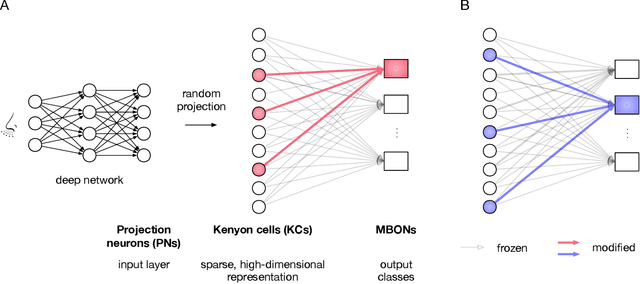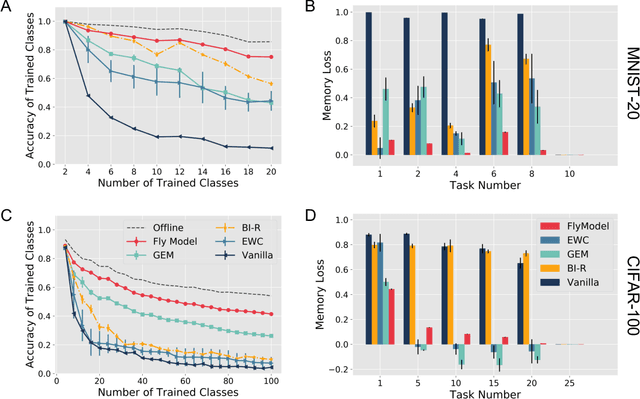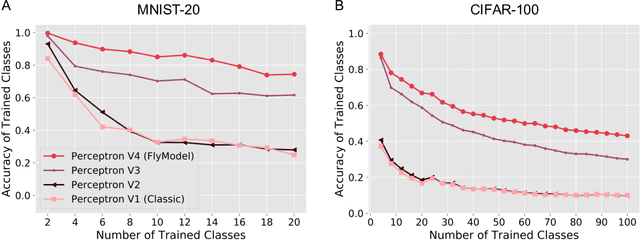Algorithmic insights on continual learning from fruit flies
Paper and Code
Jul 15, 2021



Continual learning in computational systems is challenging due to catastrophic forgetting. We discovered a two layer neural circuit in the fruit fly olfactory system that addresses this challenge by uniquely combining sparse coding and associative learning. In the first layer, odors are encoded using sparse, high dimensional representations, which reduces memory interference by activating non overlapping populations of neurons for different odors. In the second layer, only the synapses between odor activated neurons and the output neuron associated with the odor are modified during learning; the rest of the weights are frozen to prevent unrelated memories from being overwritten. We show empirically and analytically that this simple and lightweight algorithm significantly boosts continual learning performance. The fly associative learning algorithm is strikingly similar to the classic perceptron learning algorithm, albeit two modifications, which we show are critical for reducing catastrophic forgetting. Overall, fruit flies evolved an efficient lifelong learning algorithm, and circuit mechanisms from neuroscience can be translated to improve machine computation.
 Add to Chrome
Add to Chrome Add to Firefox
Add to Firefox Add to Edge
Add to Edge